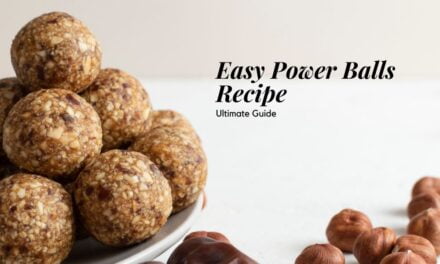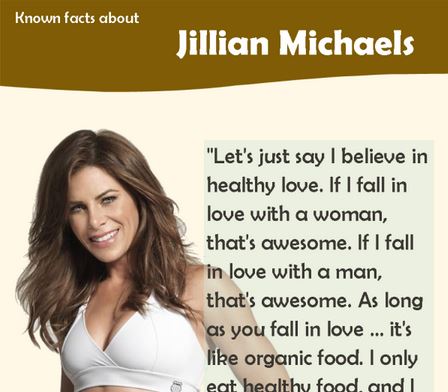Introduction: Fueling for Exercise
Proper fueling for exercise is important. What you eat and when you eat it can affect your energy levels, endurance, and recovery. In the world of sports, the right fuel at the right time is the unsung hero behind every powerful serve, lightning-fast sprint, and enduring marathon.
Fueling for exercise is not merely about eating; it’s about strategically consuming the right nutrients at the right times to optimize energy levels, enhance endurance, and accelerate recovery.
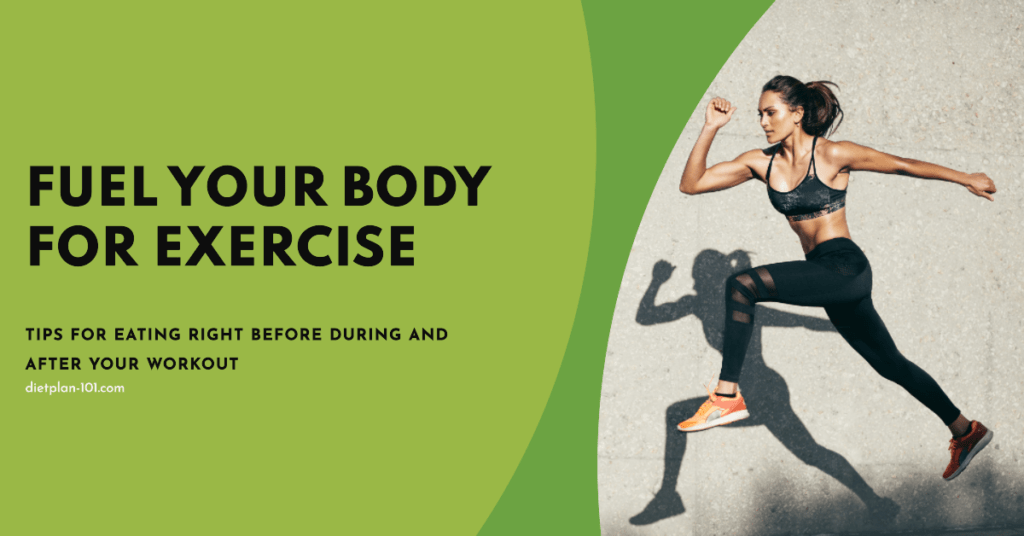
Table of Contents
Key points for exercise fueling:
Here’s a table summarizing the optimal timing and types of meals or snacks for exercise:
| Timing | Meal/Snack Type |
|---|---|
| Before Exercise | Balanced meal with carbohydrates, protein, and healthy fats (2-3 hours before) |
| During Exercise | Easily digestible carbohydrates (e.g., energy gels, fruit) and hydration |
| After Exercise | Protein-rich meal with carbohydrates to support recovery (within 1 hour) |
- Your body uses carbohydrates, protein, and fat for energy during exercise.
- Eating a balanced meal or snack before exercise can help give you energy and prevent fatigue.
- Drinking fluids during exercise is important to stay hydrated.
- Eating a balanced meal or snack after exercise can help your body recover and rebuild muscle tissue.
Understanding Macronutrients for Exercise
Macronutrients are the nutrients that your body needs in large amounts. They are carbohydrates, proteins, and fats. Carbohydrates, proteins, and fats are all important for exercise, but they serve different purposes.
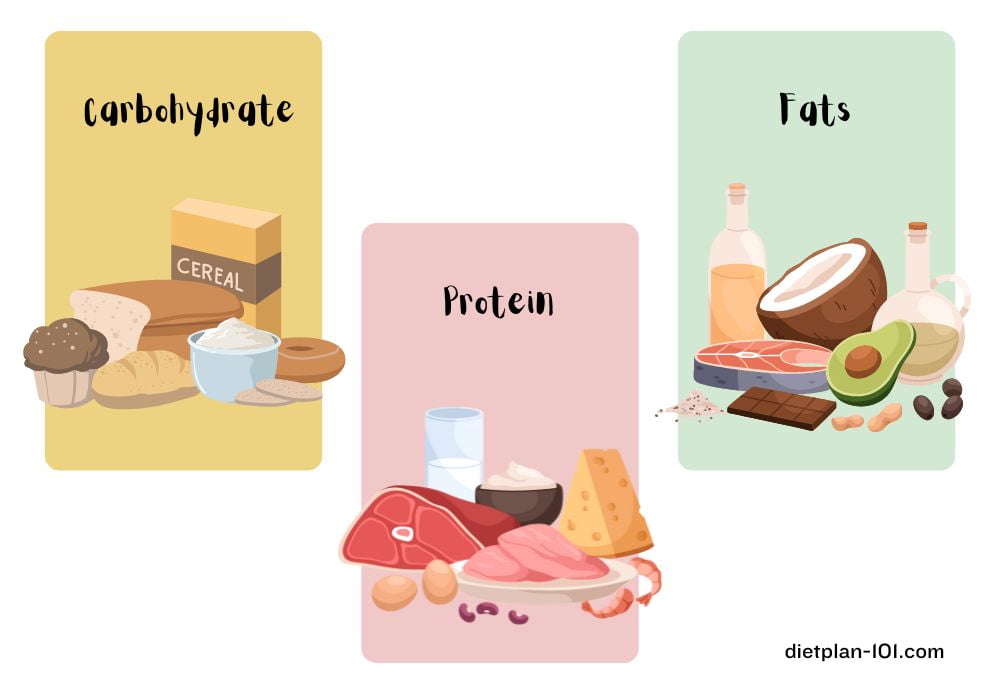
- Carbohydrates are your body’s preferred fuel source for high-intensity activities. They are broken down into glucose, which is the body’s main source of energy. It is important to consume carbohydrates before exercise to provide readily available energy. Different types of carbohydrates, such as complex carbs found in whole grains and simple sugars found in fruits, can be strategically consumed based on the duration and intensity of your workout.
- Proteins play a vital role in muscle repair and growth. When you exercise, your muscles break down. Proteins help repair these muscle fibers so that they can become stronger. It is important to consume protein after exercise to support your body’s recovery. Lean protein sources like chicken, fish, and plant-based proteins are all good choices.
- Fats are often demonized in the diet industry, but they are actually essential for providing sustained energy, insulation, and hormone production. Fats also help to absorb vitamins and minerals. Incorporating healthy fats like avocados, nuts, and olive oil into your diet is crucial for overall health and performance.
Balancing these macronutrients is essential for different types of workouts. For strength training, consuming an adequate amount of protein is vital for muscle growth. Endurance training, on the other hand, may require more carbohydrates to sustain energy levels over longer periods. Finding the right balance of macronutrients for your specific fitness goals will help maximize your performance.
Energy contribution of carbohydrates, proteins, and fats during exercise

Flow Diagram Showing How Carbohydrates, Proteins, and Fats Are Metabolized During Exercise
Flow diagram representing the metabolism of macronutrients during exercise:
- Carbohydrates: Stored as glycogen and then used to produce energy (ATP) during exercise.
- Proteins: Broken down into amino acids, which are then used to produce energy during exercise.
- Fats: Broken down into fatty acids, which are then used to produce energy during exercise.
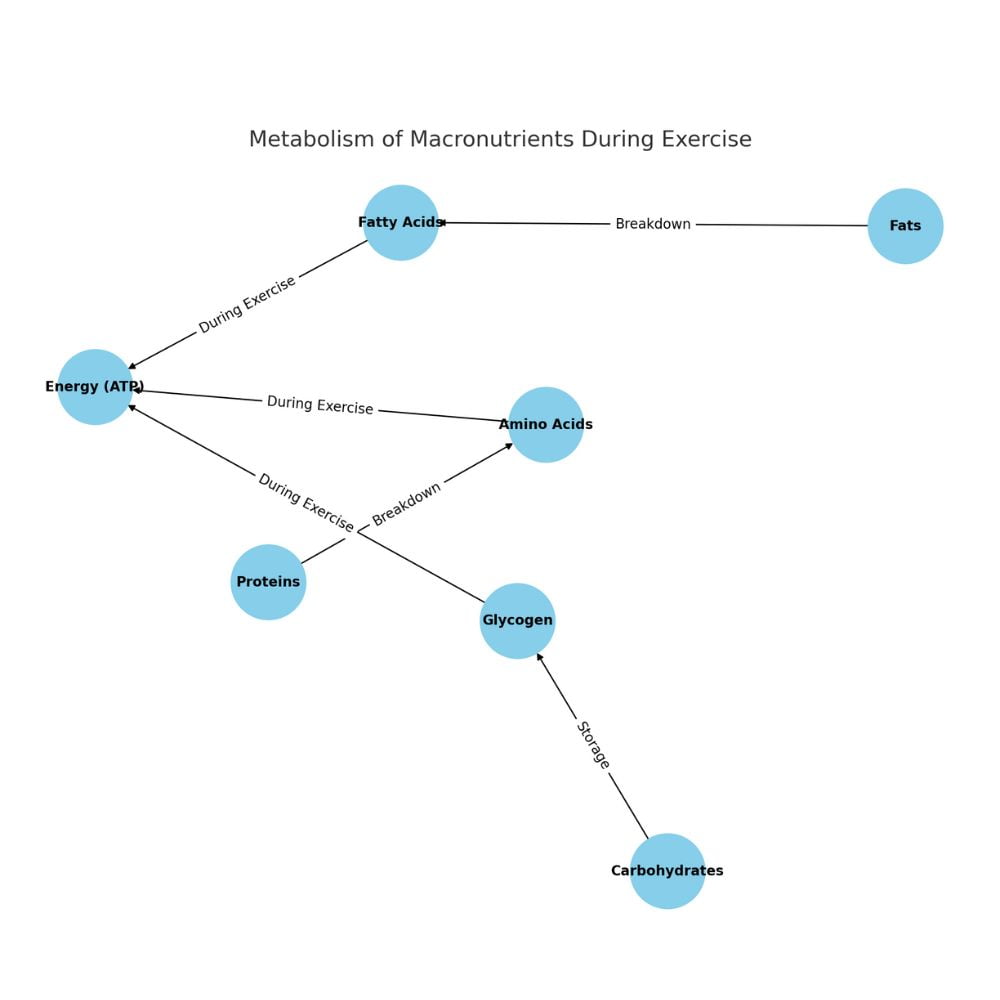
Recommended macronutrient distribution for different types of exercises:
| Exercise Type | Carbohydrates (%) | Proteins (%) | Fats (%) |
|---|---|---|---|
| Endurance Training | 60 | 15 | 25 |
| Strength Training | 40 | 30 | 30 |
| Mixed Training | 50 | 20 | 30 |
- Endurance Training: Emphasizes carbohydrates for sustained energy.
- Strength Training: Requires more proteins for muscle building.
- Mixed Training: A balanced distribution for varied workouts.
Eating tips for fueling your body for exercise:
- Eat a balanced meal or snack 3-4 hours before exercise. This will give your body time to digest the food and provide you with energy for your workout.
- Choose foods that are high in carbohydrates and protein. Carbohydrates will give you energy, while protein will help your muscles recover.
- Avoid foods that are high in fat or fiber. Fat and fiber can slow down digestion and make you feel sluggish.
- Drink plenty of fluids before, during, and after exercise. Staying hydrated is important for both performance and recovery.
- Listen to your body and eat when you are hungry. Don’t wait until you are starving to eat.
- Experiment with different foods and find what works best for you. Everyone is different, so what works for one person may not work for another.
Pre-Exercise Fueling: What Foods to Eat and Avoid

Proper pre-exercise fueling is essential for optimal performance. When you exercise, your body needs energy to power your muscles. Eating a balanced meal or snack 2-3 hours before exercise can help provide your body with the fuel it needs.
What to eat before exercise
When choosing what to eat before exercise, it is important to consider the following factors:
- The type of exercise you will be doing: If you are doing a high-intensity workout, you will need to eat more carbohydrates to fuel your muscles. If you are doing a low-intensity workout, you may not need as many carbohydrates.
- Your personal preferences: Some people prefer to eat a light meal before exercise, while others prefer to eat a heavier meal. Experiment with different foods and find what works best for you.
- The timing of your workout: If you have to eat closer to your workout, choose easily digestible foods that will not make you feel full or sluggish.
Some good choices for pre-exercise meals and snacks include:
| Pre-Exercise Meals and Snacks |
|---|
| Whole wheat toast with peanut butter and banana |
| Greek yogurt with berries and granola |
| Oatmeal with fruit and nuts |
| Hard-boiled eggs |
| Trail mix |
| Fruit smoothie |
Foods to avoid before exercise
There are some foods that you should avoid eating before exercising:
- Fatty or greasy foods: These foods can slow down digestion and make you feel full or sluggish.
- Carbonated drinks: Carbonated drinks can cause bloating or gas.
- High-fiber foods: High-fiber foods can also cause bloating or gas.
- Alcohol: Alcohol dehydrates the body and can impair performance.
Hydration: How to stay hydrated before exercise
It is also important to stay hydrated before exercise. Drink plenty of water and other fluids throughout the day leading up to your workout. You may also want to consider drinking a sports drink or electrolyte-rich beverage before exercise, especially if you will be exercising for an extended period of time.
By following these tips, you can ensure that you are properly fueled for your next workout.
In-Exercise Fueling: Maintaining Momentum
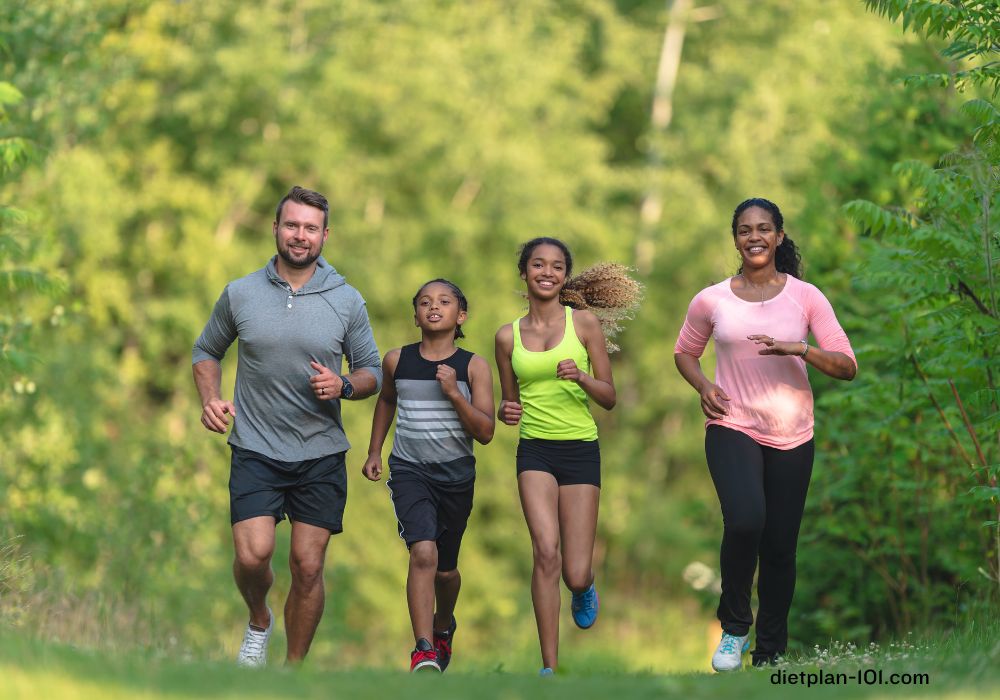
Staying hydrated and fueled during exercise is essential for optimal performance. When you exercise, you lose fluids through sweat. If you don’t replace these fluids, you can become dehydrated, which can lead to fatigue, decreased endurance, and impaired cognitive function.
How to stay hydrated during exercise
Drink plenty of water during your workout. Aim to drink 16–24 ounces of fluids per hour of exercise. If you are exercising in hot weather or for an extended period of time, you may need to drink more. You can also try drinking electrolyte-rich beverages or sports drinks, which can help replenish the sodium and minerals lost through sweat.
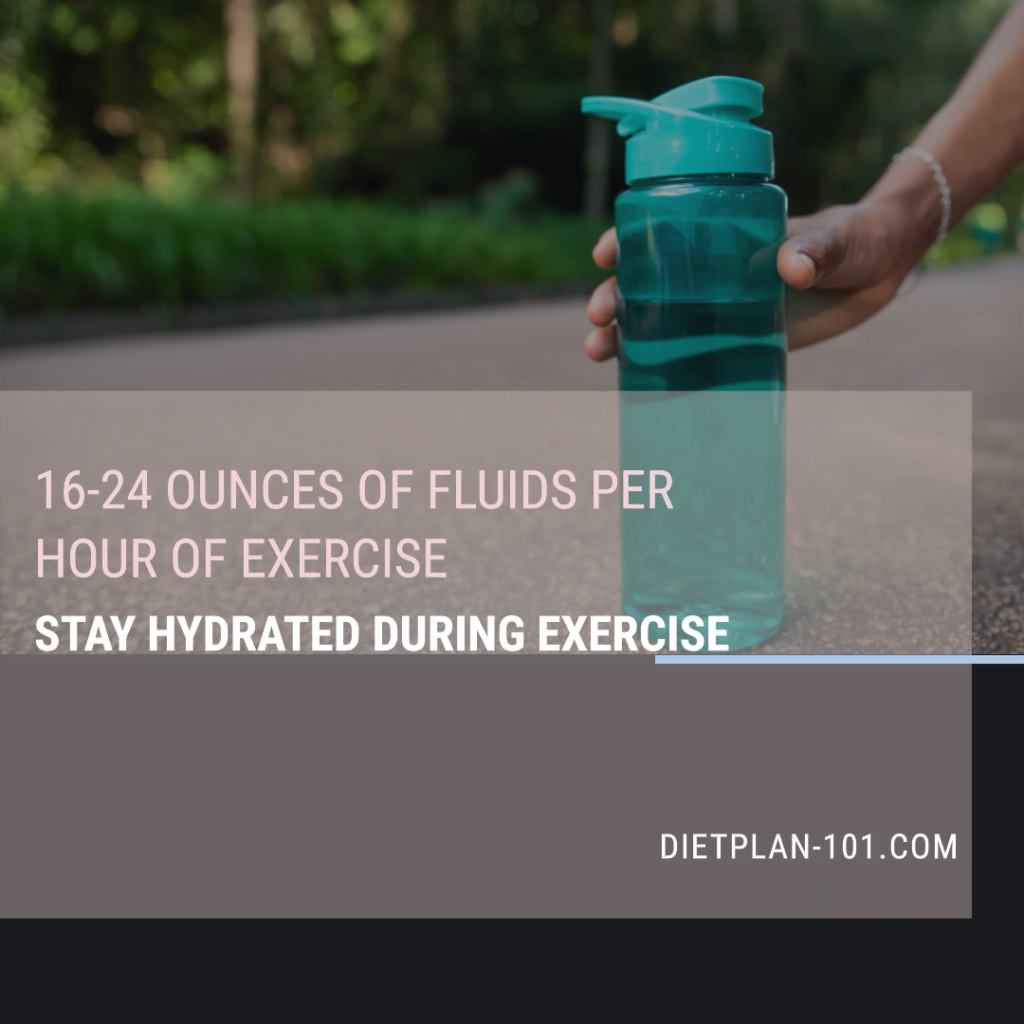
Fueling: What to eat during exercise
In addition to staying hydrated, it is also important to fuel your body during exercise. This is especially important for long or intense workouts.
Carbohydrates are the body’s preferred fuel source for exercise. Easily digestible carbohydrates, such as energy gels, bananas, or energy bars, can help sustain endurance and delay fatigue.
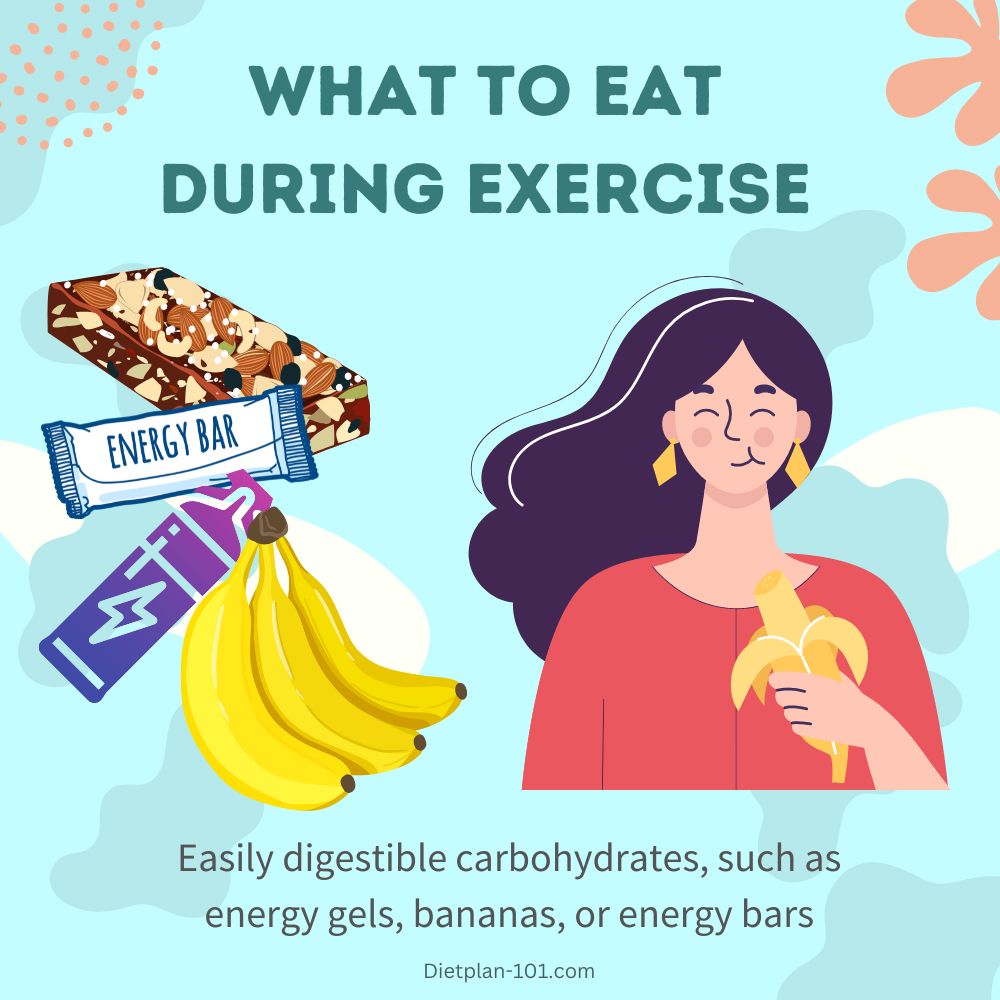
Timing: How to eat during exercise
It is also important to time your fueling correctly. If you eat or drink too much too soon, it can upset your stomach. Aim to consume small amounts of fuel at regular intervals, such as every 30-45 minutes. This will help keep your energy levels up without causing digestive distress.
Here are some good choices for in-exercise fueling:
- Energy gels
- Bananas
- Energy bars
- Sports drinks
- Water
- Electrolyte-rich beverages
Post-Exercise Fueling: Recovery and Rebuilding
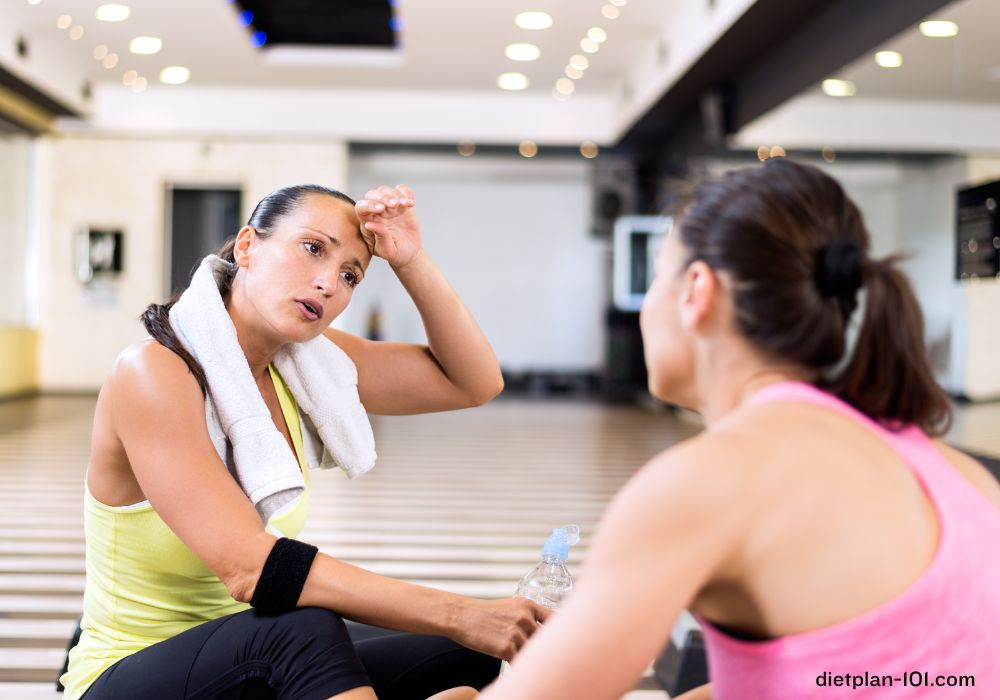
After a workout, it is important to refuel your body with a combination of carbohydrates and protein. This will help your muscles recover and rebuild. Carbohydrates provide energy, while protein helps repair muscle tissue.
It is best to consume a post-workout meal or snack within 30 minutes to an hour after exercise.
This is when your body is most receptive to nutrients. A good post-workout meal or snack should include:
- Carbohydrates: Fast-digesting carbohydrates, such as white rice or fruits, will help replenish your glycogen stores. Glycogen is the body’s stored form of glucose, which is used for energy during exercise.
- Protein: Lean protein sources, such as grilled chicken or whey protein shakes, will help repair muscle tissue.
- Fluids: It is also important to stay hydrated after exercise. Drink plenty of water or electrolyte-rich fluids to replenish the fluids you lose through sweat.
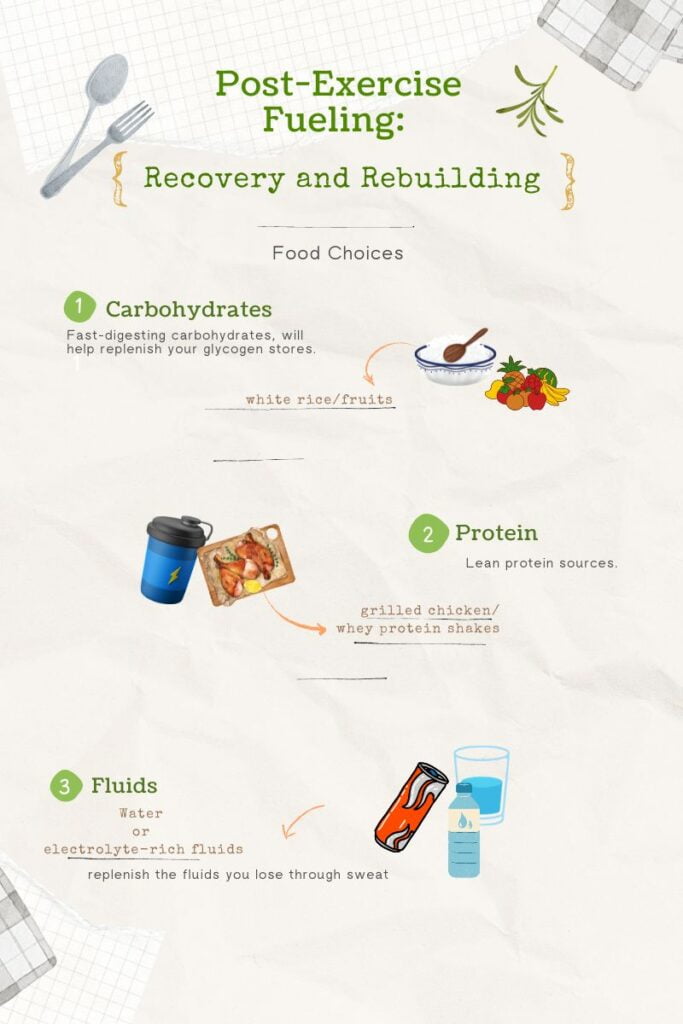
Post-workout meals and snacks: What to eat after exercise
- Oatmeal with berries and nuts
- Grilled chicken with brown rice and vegetables
- Whey protein shake with fruit and yogurt
- Smoothies made with milk, fruit, and protein powder
- Trail mix
It is important to listen to your body and eat what feels good to you. Some people may prefer to eat a larger meal after exercise, while others may prefer to eat smaller snacks throughout the day. Experiment with different foods and find what works best for you.
Tips for post-exercise fueling:
- Make sure your meal or snack is balanced. It should include carbohydrates, protein, and fluids.
- Avoid sugary drinks or processed foods. These foods can spike your blood sugar and then cause it to crash, leaving you feeling tired and hungry.
- Don’t wait too long to eat. The sooner you eat after exercise, the better your muscles will recover.
- Listen to your body. Don’t force yourself to eat if you’re not hungry.
Additional considerations for post-exercise fueling:
- Individual needs: Everyone’s needs are different, so it’s important to tailor your post-workout fueling to your individual needs. For example, if you’re training for a marathon, you’ll need to eat more carbohydrates than if you’re just going for a leisurely walk.
- Food allergies or intolerances: If you have any food allergies or intolerances, make sure to choose foods that are safe for you to eat. There are many nutritious foods that are safe for people with food allergies and intolerances.
- Dietary restrictions: If you follow a specific diet, such as a vegan or gluten-free diet, make sure to choose foods that are compatible with your diet. There are many nutritious foods that are vegan, gluten-free, or both.
- Meal timing: Some people prefer to eat a large meal after exercise, while others prefer to eat smaller meals or snacks throughout the day. Experiment to find what works best for you.
Special Considerations for Fueling
The best fueling strategy for exercise will vary depending on individual factors, such as age, life stage, and diet.
- Older adults may have different nutrient requirements than younger adults. They may need to eat more carbohydrates and protein before, during, and after exercise to support muscle function and recovery. It is always advisable for older adults to consult with a healthcare professional or dietitian to develop a personalized fueling plan.
- Individuals who follow specialized diets, such as vegetarian or vegan diets, may need to pay extra attention to meeting their nutrient needs. They may need to supplement their diet with certain nutrients, such as iron or vitamin B12. It is always advisable for these individuals to consult with a dietitian or healthcare professional to develop a personalized fueling plan.
- Individuals with food sensitivities or allergies should also consider alternatives to common fueling options. For example, someone with lactose intolerance can opt for lactose-free protein sources, while someone with a gluten sensitivity can choose gluten-free carbohydrates. Paying attention to potential allergens and finding suitable alternatives is crucial to avoid discomfort or adverse reactions during exercise.
It is important to note that these are just a few examples of special considerations for fueling. The best way to determine the best fueling strategy for you is to talk to a healthcare professional or dietitian. They can help you create a personalized plan that meets your individual needs and goals.
Additional tips for fueling if you have any special considerations:
- Plan ahead. If you have special dietary needs, it is important to plan ahead so that you have the right foods available when you need them. This could mean packing your own snacks or meals, or making sure that there are restaurants or grocery stores nearby that offer options that are safe for you to eat.
- Be flexible. It is not always possible to stick to your ideal fueling plan, especially if you are traveling or if your schedule changes unexpectedly. Be prepared to make adjustments as needed, and don’t beat yourself up if you don’t always get it perfect.
- Listen to your body. The most important thing is to listen to your body and eat what feels good to you. If you are feeling hungry or tired, eat something. If you are feeling full or bloated, don’t eat anything.
The Psychological Aspects of Eating and Exercise
Eating and exercising are not just physical activities. They also have a psychological impact on our minds and emotions.
- Mindset: Our mindset can have a big impact on our performance in exercise. If we have a positive mindset, we are more likely to be motivated and to stick with our exercise routine. On the other hand, if we have a negative mindset, we are more likely to give up easily.
- Emotional eating: Some people use food to cope with negative emotions, such as stress, anxiety, or sadness. This can lead to unhealthy eating habits and weight gain. It is important to find healthy ways to cope with negative emotions, such as exercise, meditation, or talking to a therapist.
- Healthy relationships with food: It is important to have a healthy relationship with food. This means eating when we are hungry, stopping when we are full, and enjoying the foods that we eat. It also means not using food as a reward or punishment.
By understanding the psychological aspects of eating and exercise, we can create a healthier and more balanced lifestyle.
Cultivating a healthy relationship with food for exercise:
- Focus on nourishment rather than deprivation. Eating should be about nourishing your body, not depriving it. Choose foods that make you feel good and that give you energy.
- Listen to your body. Eat when you are hungry and stop when you are full. Don’t force yourself to eat if you’re not hungry, and don’t feel guilty if you eat when you’re full.
- Don’t use food as a reward or punishment. Food is not a reward for good behavior or a punishment for bad behavior. It is simply fuel for your body.
- Make peace with your food. Everyone has different dietary needs and preferences. There is no one “right” way to eat. Accept your body and your food choices, and don’t compare yourself to others.
How to Keep Tracking for Exercise Routines
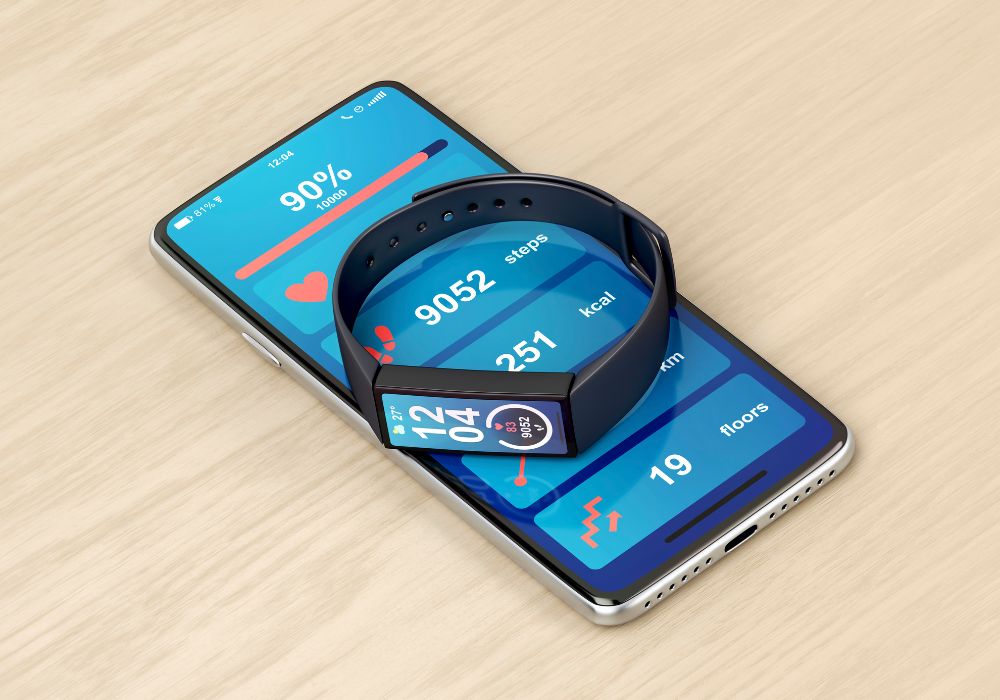
Technology has made it easier than ever to track our diet and exercise routines. There are now a variety of apps and gadgets that can help us track our food intake, calories burned, and physical activity levels. These tools can provide us with valuable insights into our habits and help us make better choices for our health.
When choosing a tracking tool, it is important to select one that is right for you. Some factors to consider include your goals, budget, and fitness level. There are many free and paid options available, so you should be able to find a tool that fits your needs.
Once you have chosen a tracking tool, be sure to use it consistently. The more data you collect, the more accurate your insights will be. You can also use your tracking data to set goals and track your progress over time.
Common Myths and Misconceptions for Exercise Fueling
There are many myths and misconceptions surrounding exercise fueling. Some of these myths include:
- Carbohydrates are bad for you. Carbohydrates are not bad for you. In fact, they are an essential source of energy for exercise.
- Eating before exercise leads to cramps. Eating before exercise does not lead to cramps. In fact, it can help prevent cramps by providing your body with the energy it needs.
- You need to eat a lot of protein after exercise. You only need to eat about 20-25 grams of protein after exercise. This is enough to help your muscles recover.
It is important to debunk these myths and misconceptions so that you can make informed decisions about your fueling strategies. By understanding the science behind exercise fueling, you can choose the right foods and supplements to help you perform your best.
Top Sports Drinks for Fueling Your Workout
The global sports drink market is projected to reach $90.8 billion by 2027, growing at a CAGR of 5.9% from 2022 to 2027.
Hydration is essential for physical performance, and sports drinks can help to replenish the essential electrolytes lost during exercise. Here are some of the top sports drinks on the market, along with their key features:
- Gatorade: The most popular sports drink in the United States, Gatorade is made with a blend of electrolytes and carbohydrates to help hydrate and replenish energy during workouts.
- Powerade: Another popular sports drink, Powerade is similar to Gatorade in terms of its composition but has a slightly different flavor profile.
- BodyArmor: A newer sports drink that has gained popularity in recent years, BodyArmor is made with coconut water, which gives it a more natural flavor than traditional sports drinks. BodyArmor is also lower in sugar than some other sports drinks.
- VitaminWater: Not technically a sports drink, VitaminWater is a flavored water that is fortified with vitamins and minerals. VitaminWater can help to hydrate you during exercise, but it does not contain as many electrolytes as traditional sports drinks.
- Propel: Another flavored water that is often used as a sports drink, Propel is low in sugar and calories, and it is also fortified with electrolytes. Propel is a good choice for people who are looking for a refreshing and hydrating drink that is not too sweet.
The average American consumes 20 gallons of sports drinks per year.
When choosing a sports drink, it is important to consider your individual needs and preferences. Some factors to consider include the intensity and duration of your workout, your sweat rate, and your personal taste preferences. It is also important to note that sports drinks can be high in sugar, so it is important to consume them in moderation.
Tips for choosing and using sports drinks:
- Choose a sports drink that is appropriate for the intensity and duration of your workout.
- If you are sweating heavily, you may need to drink more than one sports drink per hour.
- If you have diabetes, talk to your doctor before drinking sports drinks.
- Sports drinks can be a good source of electrolytes, but they are not a substitute for a balanced diet.
- Drink sports drinks in moderation to avoid consuming too much sugar.

- Power ball recipe – Making Your Own Power Balls is Easy Peasy
- Appetite Suppressant Foods – You Need to Try: Stop Craving
- Weight Loss Hacks – 10 Crazy Weight Loss Hacks That Actually Worked (According to Science!)
Conclusion
Proper fueling is essential for optimal performance, recovery, and reaching your fitness goals. By understanding the role of macronutrients, practicing effective pre-exercise, in-exercise, and post-exercise fueling strategies, and considering individual factors and needs, you can maximize your results.
Here are some key takeaways from this article:
- Macronutrients: Carbohydrates, proteins, and fats are all important for exercise performance. Carbohydrates provide energy, proteins help to repair muscle tissue, and fats provide essential nutrients.
- Pre-exercise fueling: Eating a balanced meal or snack 2-3 hours before exercise will help to provide your body with the energy it needs.
- In-exercise fueling: If you are exercising for longer than an hour, you may need to eat or drink something during your workout to stay hydrated and energized.
- Post-exercise fueling: Eating a balanced meal or snack within 30 minutes after exercise will help to replenish your glycogen stores and repair muscle tissue.
- Individual factors: Your age, fitness level, and dietary needs will all affect your fueling needs. It is important to tailor your fueling strategies to your individual circumstances.
- Healthy habits: Building healthy habits around fueling, such as meal planning and packing snacks, will help you stay on track with your fueling goals.
- Self-care: Taking care of your mental and emotional health is just as important as fueling your body properly. Make sure to get enough sleep, manage stress, and practice relaxation techniques.
- Professional help: If you have any questions or concerns about fueling for exercise, it is always a good idea to talk to a healthcare professional or registered dietitian. They can help you create a personalized fueling plan that meets your individual needs.

FAQ (Frequently Asked Questions)
What should I eat before a workout?
Eat a light snack or meal 2-3 hours before your workout. Good pre-workout foods include carbohydrates, protein, and fats.
How important is hydration during exercise?
Hydration is essential for exercise performance. Drink plenty of fluids before, during, and after exercise.
Can I exercise on an empty stomach?
It is generally not recommended to exercise on an empty stomach. If you do choose to exercise on an empty stomach, start with a light warm-up and listen to your body.
How do I balance my diet for strength vs. endurance training?
Strength training requires more protein than endurance training. Endurance training requires more carbohydrates than strength training.
What are some common mistakes in fueling for exercise?
Not eating enough, eating too much, eating the wrong foods, not drinking enough fluids, and not listening to your body.
How can I adjust my diet if I have food allergies?
Read food labels carefully, talk to a registered dietitian, cook at home, eat out, and carry snacks.
What to eat after a workout?
After a workout, it’s vital to replenish glycogen stores and repair muscle tissues. Opt for a combination of protein and carbohydrates. Consider a protein shake, grilled chicken with quinoa, or Greek yogurt with fruit.
How to stay hydrated during exercise?
Stay hydrated by drinking water before, during, and after exercise. A good rule of thumb is to consume 17 to 20 ounces of water 2 to 3 hours before exercising, 8 ounces during your warm-up, and 7 to 10 ounces every 10 to 20 minutes during exercise.
What to avoid eating before a workout?
Avoid heavy, greasy, or high-fiber foods before a workout. These can cause digestive discomfort. Steer clear of soda, sugary snacks, and excessive caffeine, which may lead to energy crashes.
What to avoid eating after a workout?
Avoid alcohol and foods high in fat or sugar. These can inhibit recovery by slowing down the absorption of nutrients.
How to fuel for a long run?
For a long run, consume complex carbohydrates like whole grains, lean proteins, and healthy fats. Hydrate well and consider energy gels or chews during the run.
How to fuel for a marathon?
Marathon fueling requires careful planning. Focus on a carb-rich diet leading up to the race, stay hydrated, and practice your fueling strategy during training runs with energy gels or sports drinks.
How to fuel for a triathlon?
Triathlon fueling demands a balanced diet of carbs, proteins, and fats. Hydrate properly, and practice in-race nutrition with energy gels, chews, or bars, and electrolyte drinks.
How to fuel for a weightlifting workout?
Fuel your weightlifting workout with lean proteins, complex carbs, and healthy fats. Pre-workout, consider a protein shake with a banana. Post-workout, opt for lean meats, grains, and vegetables.
How to fuel for a yoga workout?
For yoga, light and nourishing foods are ideal. Think fruits, nuts, or a smoothie. Avoid heavy or acidic foods that might cause discomfort during practice.
How to fuel for a dance workout?
Dance workouts require energy and stamina. Fuel up with balanced meals containing lean proteins, whole grains, and healthy fats. Stay hydrated and avoid heavy or greasy foods.
What to eat before a dance performance?
Before a dance performance, focus on light, easily digestible foods that provide sustained energy without causing discomfort. Ideal options might include a banana with almond butter, a small serving of whole-grain pasta with lean protein, or a smoothie with fruits and Greek yogurt. Avoid heavy, fatty, or overly spicy foods that could slow you down or upset your stomach.
How to Fuel for a Long Run for Beginners?
Fueling for a long run requires careful planning, especially for beginners. Start with a meal rich in easily digestible carbohydrates 2-3 hours before the run. Hydrate well by drinking 16 to 20 ounces of water a few hours before, and carry water during the run, sipping 7 to 10 ounces every 10 to 20 minutes. For runs longer than 60 minutes, consider energy gels or chews. Post-run, rehydrate and eat a balanced meal with carbohydrates, proteins, and healthy fats. Listen to your body and adjust as needed, and don’t hesitate to seek professional guidance if you have specific goals or dietary restrictions.

